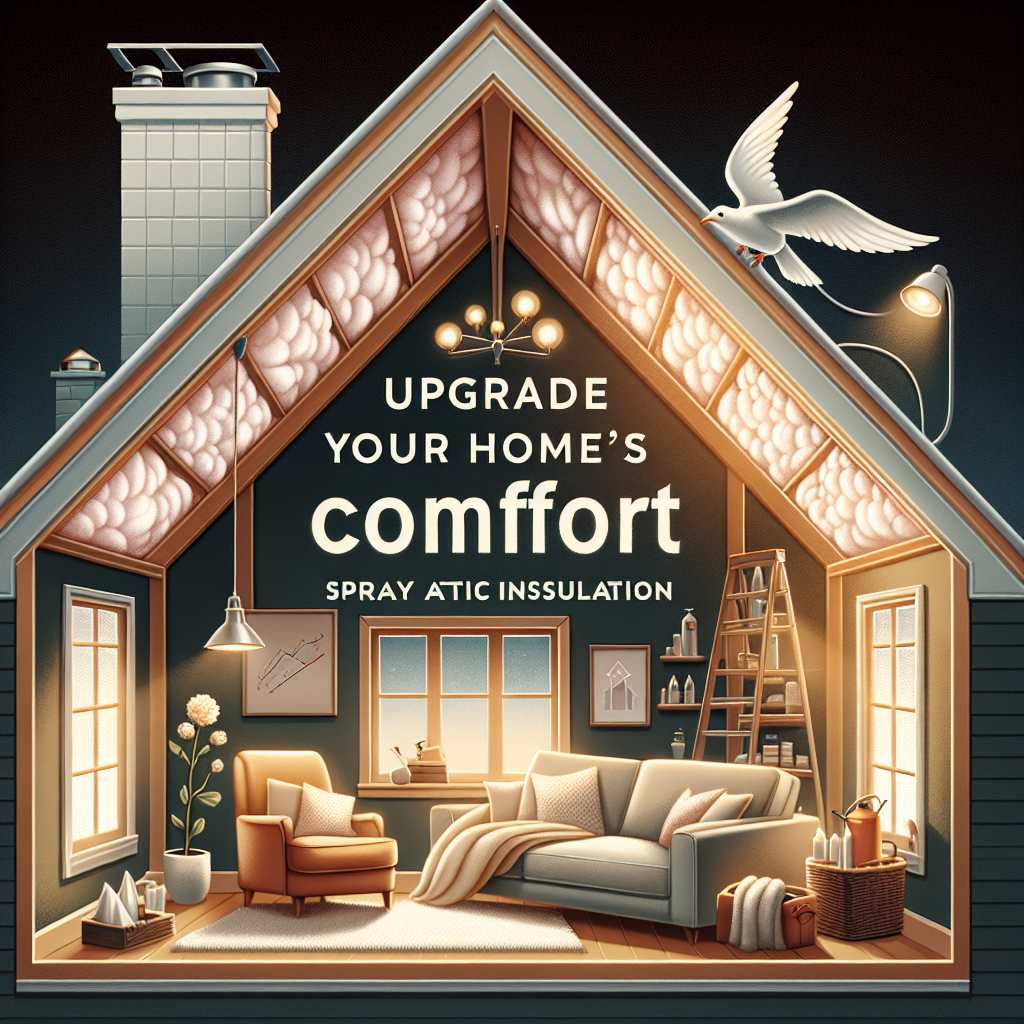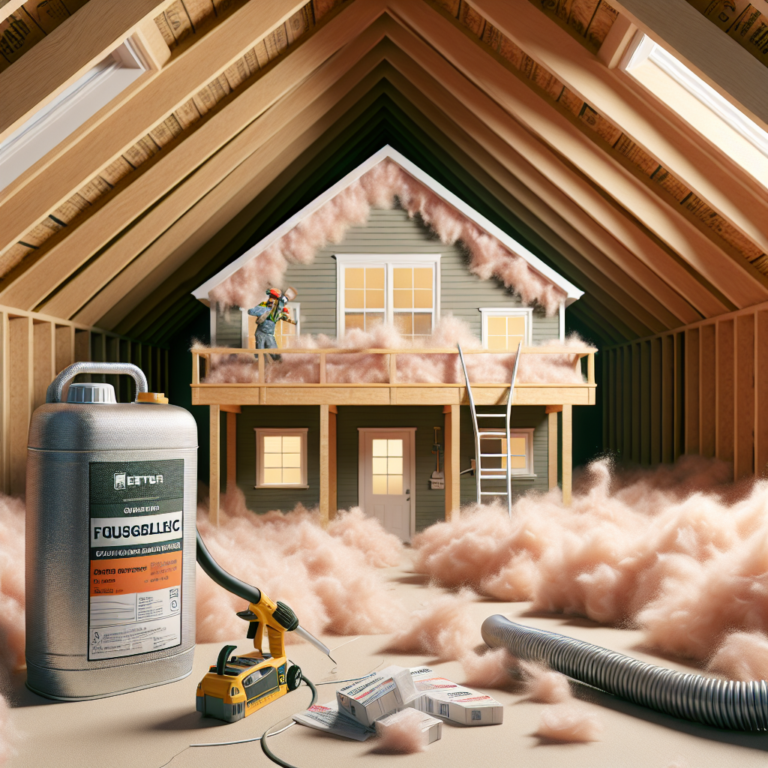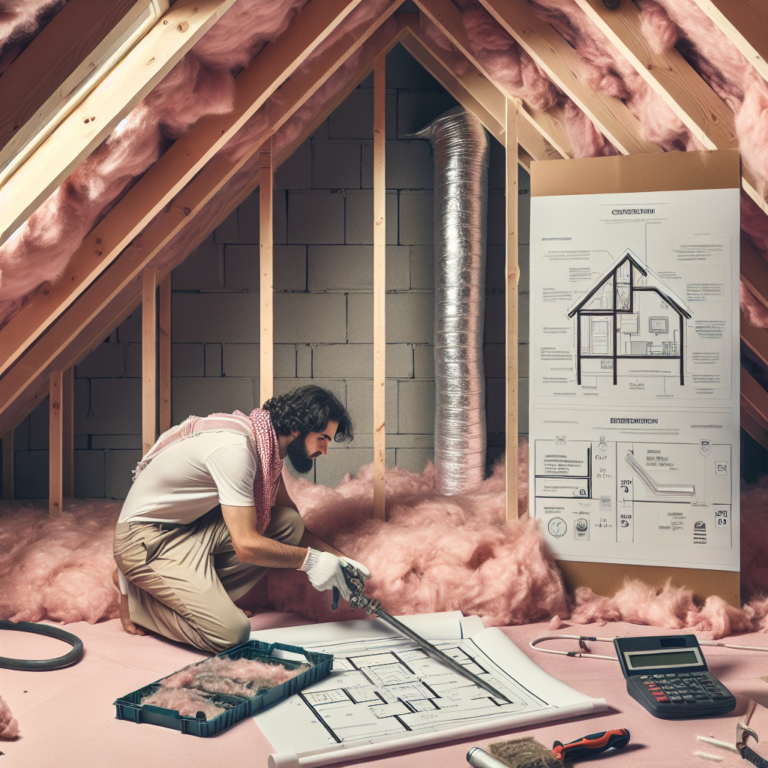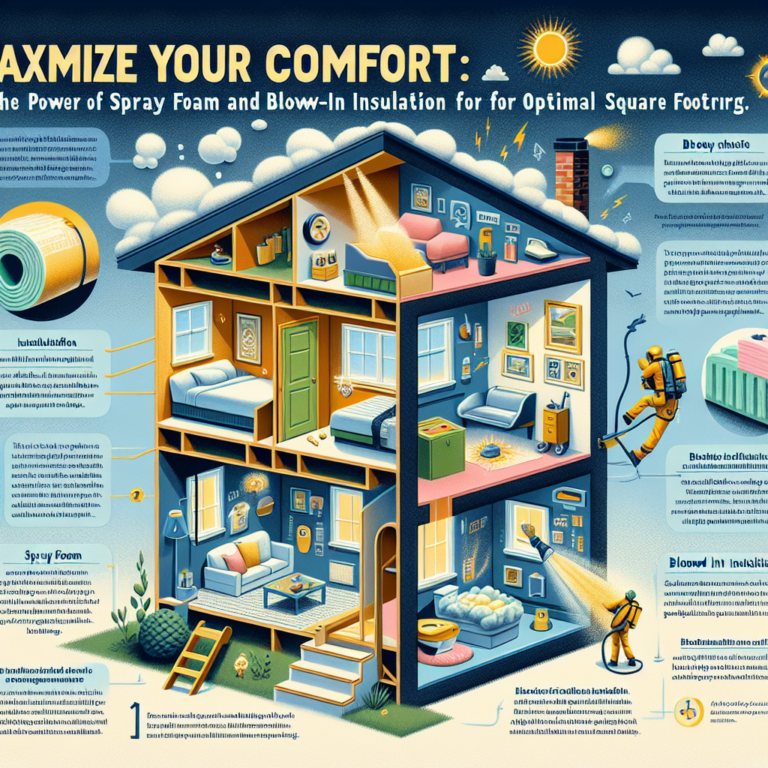-
Table of Contents
Boost your home’s energy efficiency with added insulation over blown-in!
Introduction
Adding insulation over blown in is a common practice for improving the energy efficiency and comfort of a home. This process involves placing additional insulation on top of existing blown-in insulation, which can help to further reduce heat loss and improve the overall insulation value of a home. Whether you are looking to lower your energy bills, increase the comfort of your living space, or reduce your carbon footprint, adding insulation over blown in is a simple and effective solution. In this guide, we will discuss the benefits of this method and provide some tips for a successful installation.
Benefits of Adding Spray Attic Insulation Near Me
Insulating your attic is one of the most effective ways to improve the energy efficiency of your home. It helps to keep your home warm in the winter and cool in the summer, reducing your energy bills and making your living space more comfortable. While there are various types of insulation available, one of the most popular options is spray attic insulation. This type of insulation is applied using a spray gun, allowing it to reach every nook and cranny of your attic space. If you are considering adding insulation over blown-in insulation, here are some benefits of choosing spray attic insulation near you.
First and foremost, spray attic insulation offers superior coverage compared to other types of insulation. The spray gun allows the insulation to be applied evenly and thoroughly, ensuring that there are no gaps or spaces left uninsulated. This is especially beneficial when adding insulation over blown-in insulation, as it can fill in any gaps or settle areas that may have occurred over time. This means that your attic will be fully insulated, providing maximum energy efficiency for your home.
Another advantage of spray attic insulation is its ability to create an airtight seal. This is crucial in preventing air leaks, which can significantly impact the energy efficiency of your home. Air leaks can occur in various places, such as around pipes, vents, and electrical outlets. With spray attic insulation, these areas can be sealed off, preventing any air from escaping or entering your home. This not only helps to keep your home at a comfortable temperature but also improves indoor air quality by keeping out pollutants and allergens.
In addition to its insulating properties, spray attic insulation also acts as a sound barrier. This is especially beneficial if you live in a noisy neighborhood or have a home theater or music room in your attic. The dense and thick nature of spray attic insulation helps to absorb sound waves, reducing noise levels in your home. This can create a more peaceful and quiet living environment, making it easier to relax and sleep.
One of the most significant benefits of adding spray attic insulation near you is its cost-effectiveness. While the initial cost of installation may be higher than other types of insulation, the long-term savings make it a worthwhile investment. The airtight seal created by spray attic insulation helps to reduce your energy bills by preventing heat loss in the winter and heat gain in the summer. This means that your HVAC system will not have to work as hard to maintain a comfortable temperature, resulting in lower energy costs.
Moreover, spray attic insulation is a durable and long-lasting option. It does not settle or compress over time, ensuring that your attic remains well-insulated for years to come. This means that you will not have to worry about replacing or adding insulation in the future, saving you time and money in the long run.
In conclusion, adding spray attic insulation near you has numerous benefits. It provides superior coverage, creates an airtight seal, acts as a sound barrier, and is cost-effective and long-lasting. If you are looking to improve the energy efficiency of your home and create a more comfortable living space, consider adding spray attic insulation over blown-in insulation. It is a wise investment that will pay off in the long run.
How to Choose the Right Type of Spray Attic Insulation for Your Home

When it comes to insulating your attic, there are a variety of options available. One popular choice is spray attic insulation, which is applied using a spray gun and can provide a seamless and efficient barrier against heat loss. However, not all spray attic insulation is created equal. In this article, we will discuss the different types of spray attic insulation and how to choose the right one for your home.
Firstly, it is important to understand the two main types of spray attic insulation: open-cell and closed-cell. Open-cell spray foam is made up of tiny cells that are not completely closed, allowing air to fill the spaces within the material. This type of insulation is less dense and has a lower R-value (a measure of thermal resistance) compared to closed-cell spray foam. Closed-cell spray foam, on the other hand, has cells that are completely closed, making it denser and more effective at insulating. It also has a higher R-value, making it a better choice for colder climates.
When deciding between open-cell and closed-cell spray foam, it is important to consider your climate and budget. If you live in a colder climate, closed-cell spray foam may be a better option as it provides a higher level of insulation. However, it is also more expensive than open-cell spray foam. If you live in a milder climate, open-cell spray foam may be sufficient and more cost-effective.
Another factor to consider when choosing spray attic insulation is the thickness of the insulation. The thickness of the insulation will affect its R-value, with thicker insulation providing a higher R-value. It is important to consult with a professional to determine the appropriate thickness for your home based on your climate and energy efficiency goals.
In addition to open-cell and closed-cell spray foam, there are also hybrid options available. These types of spray attic insulation combine the benefits of both open-cell and closed-cell spray foam. They are typically less expensive than closed-cell spray foam but provide a higher R-value than open-cell spray foam. Hybrid spray foam is a good option for those looking for a balance between cost and insulation effectiveness.
When it comes to installation, it is important to hire a professional to ensure proper application. Spray attic insulation requires specialized equipment and training to be applied correctly. Improper installation can lead to air leaks and reduced effectiveness of the insulation. It is also important to note that spray attic insulation should not be installed over existing blown-in insulation. This can create moisture issues and reduce the effectiveness of both types of insulation.
In addition to the type of spray attic insulation, it is also important to consider the brand and quality of the product. It is recommended to choose a reputable brand and to check for any certifications or ratings from organizations such as the Insulation Contractors Association of America (ICAA) or the Spray Polyurethane Foam Alliance (SPFA). These certifications ensure that the product has been tested and meets industry standards for safety and effectiveness.
In conclusion, choosing the right type of spray attic insulation for your home requires careful consideration of factors such as climate, budget, and quality. It is important to consult with a professional and do your research to ensure that you are making an informed decision. With the right type of spray attic insulation, you can improve the energy efficiency of your home and save on heating and cooling costs.
The Process of Adding Spray Attic Insulation Near Me: What to Expect
Adding insulation to your attic is a smart and cost-effective way to improve the energy efficiency of your home. It can help keep your home cooler in the summer and warmer in the winter, reducing your energy bills and making your living space more comfortable. If you have an older home or have noticed a significant increase in your energy bills, it may be time to consider adding spray attic insulation near you.
The process of adding spray attic insulation is relatively straightforward, but it is important to understand what to expect before starting the project. This article will guide you through the process and provide you with the necessary information to make an informed decision.
The first step in adding spray attic insulation is to find a reputable and experienced contractor near you. It is essential to choose a contractor who is knowledgeable about the different types of insulation and has experience working with spray attic insulation. You can ask for recommendations from friends and family or do some research online to find a reputable contractor in your area.
Once you have selected a contractor, they will schedule a visit to your home to assess your attic and determine the best type of insulation for your specific needs. During this visit, they will also take measurements and provide you with an estimate for the project. It is essential to get multiple quotes from different contractors to ensure you are getting a fair price.
After you have chosen a contractor and agreed on a price, the next step is to prepare your attic for the installation. This includes clearing out any items stored in the attic and ensuring that there is proper ventilation. The contractor may also recommend sealing any air leaks in your attic before adding the insulation to maximize its effectiveness.
The actual installation process of spray attic insulation is relatively quick and can usually be completed in one day. The contractor will use a special machine to spray the insulation material onto the attic floor and walls. This method allows for a more even distribution of the insulation, ensuring that there are no gaps or areas left uninsulated.
Once the insulation is sprayed, it will expand and harden, creating a thick layer of insulation that will help keep your home comfortable and energy-efficient. The contractor will also clean up any excess insulation and ensure that your attic is left in the same condition as before the installation.
After the installation is complete, the contractor will conduct a final inspection to ensure that the insulation has been applied correctly and that there are no areas that need to be touched up. They will also provide you with information on how to maintain and care for your new insulation to ensure its longevity.
In conclusion, adding spray attic insulation near you is a relatively simple and straightforward process. It is essential to choose a reputable contractor and prepare your attic before the installation. With the right insulation, you can enjoy a more comfortable and energy-efficient home, making it a worthwhile investment for any homeowner. So, if you are considering adding insulation to your attic, don’t hesitate to contact a contractor near you and start reaping the benefits of a well-insulated home.
Q&A
1. Why would someone want to add insulation over blown in?
Adding insulation over blown in can help improve the overall energy efficiency of a home. It can also help reduce heating and cooling costs by providing better insulation and preventing air leaks.
2. What type of insulation is best to use over blown in?
The best type of insulation to use over blown in depends on the specific needs and structure of the home. Some options include fiberglass batts, spray foam, or cellulose insulation. It is best to consult with a professional to determine the most suitable type for your home.
3. Can adding insulation over blown in be a DIY project?
While it is possible to add insulation over blown in as a DIY project, it is recommended to hire a professional for the best results. They have the expertise and equipment to properly install the insulation and ensure it is done correctly. This can also help avoid any potential safety hazards.
Conclusion
In conclusion, adding insulation over blown-in insulation can provide numerous benefits for a home. It can improve energy efficiency, reduce utility costs, and increase overall comfort. Additionally, it can also help with noise reduction and prevent moisture buildup. Overall, investing in additional insulation can be a wise decision for homeowners looking to improve the insulation and energy efficiency of their homes.




